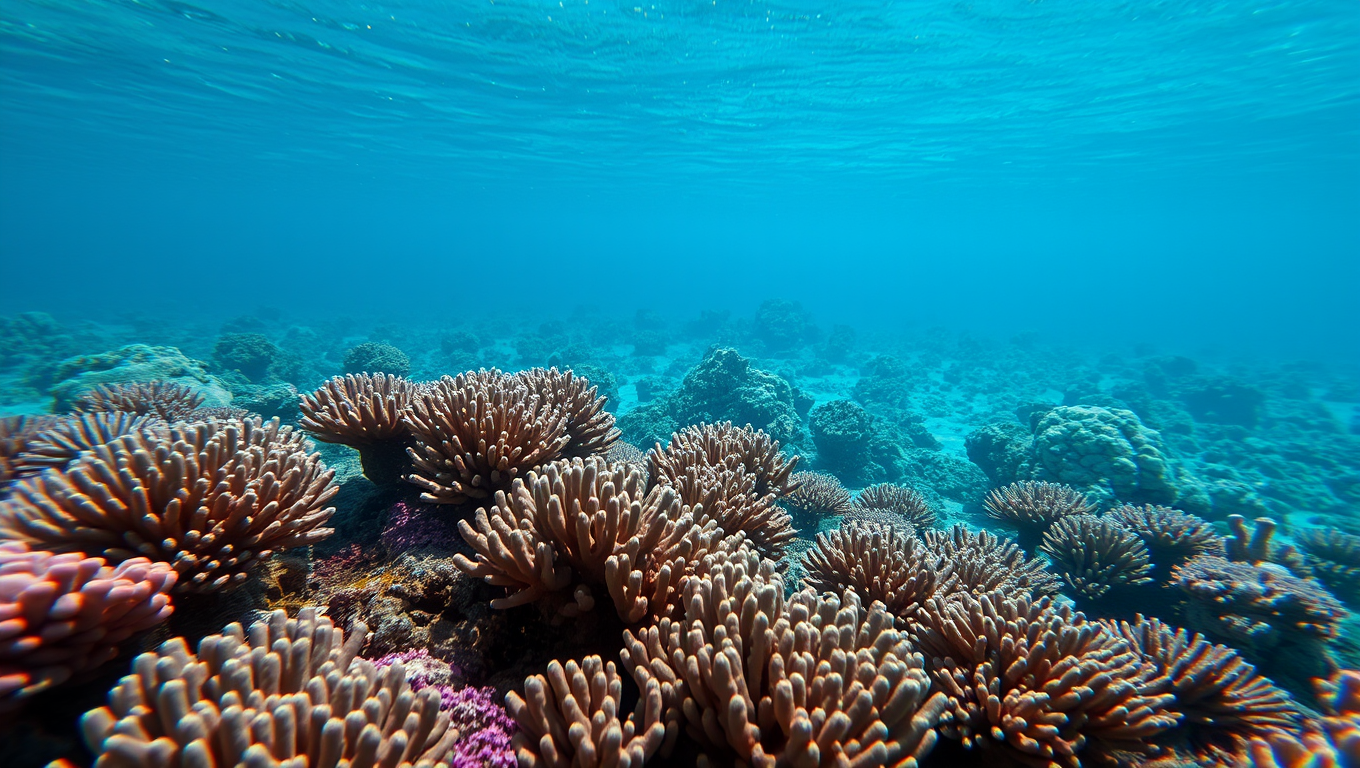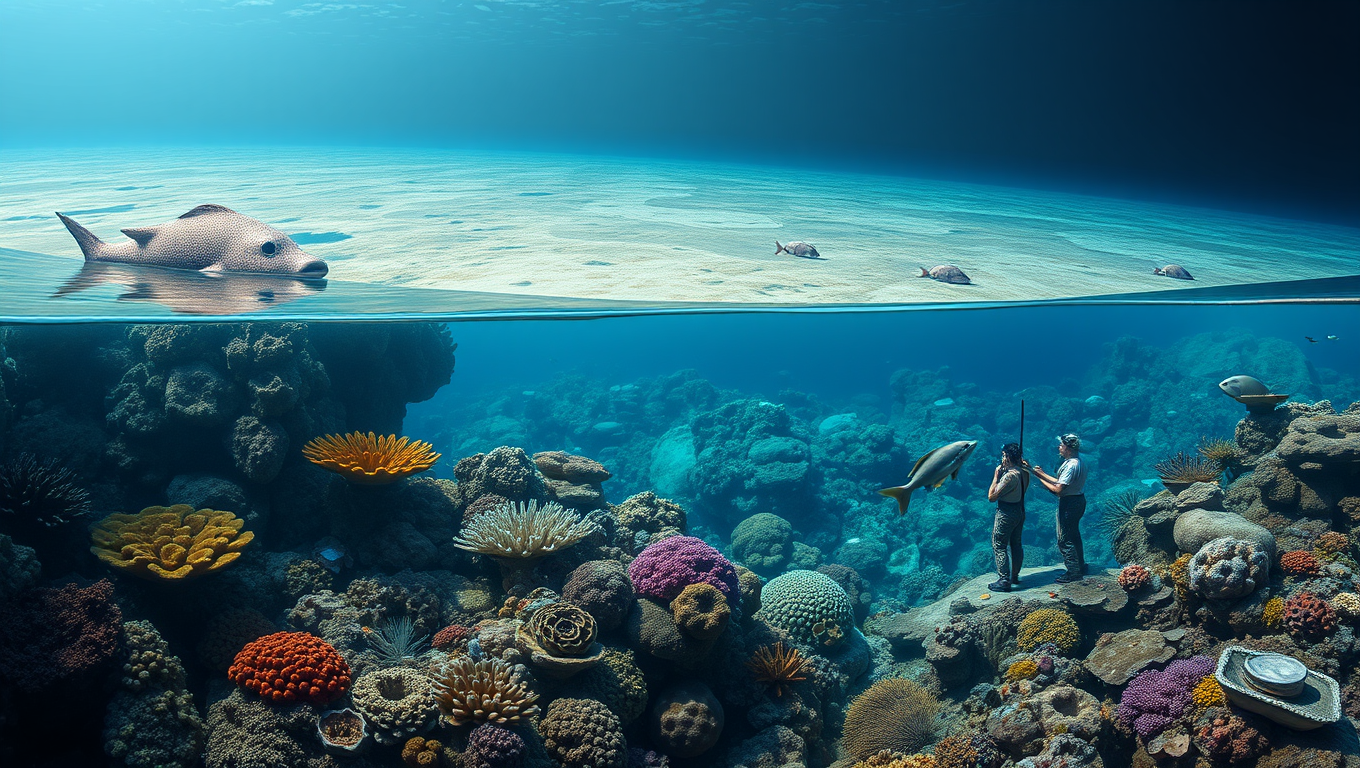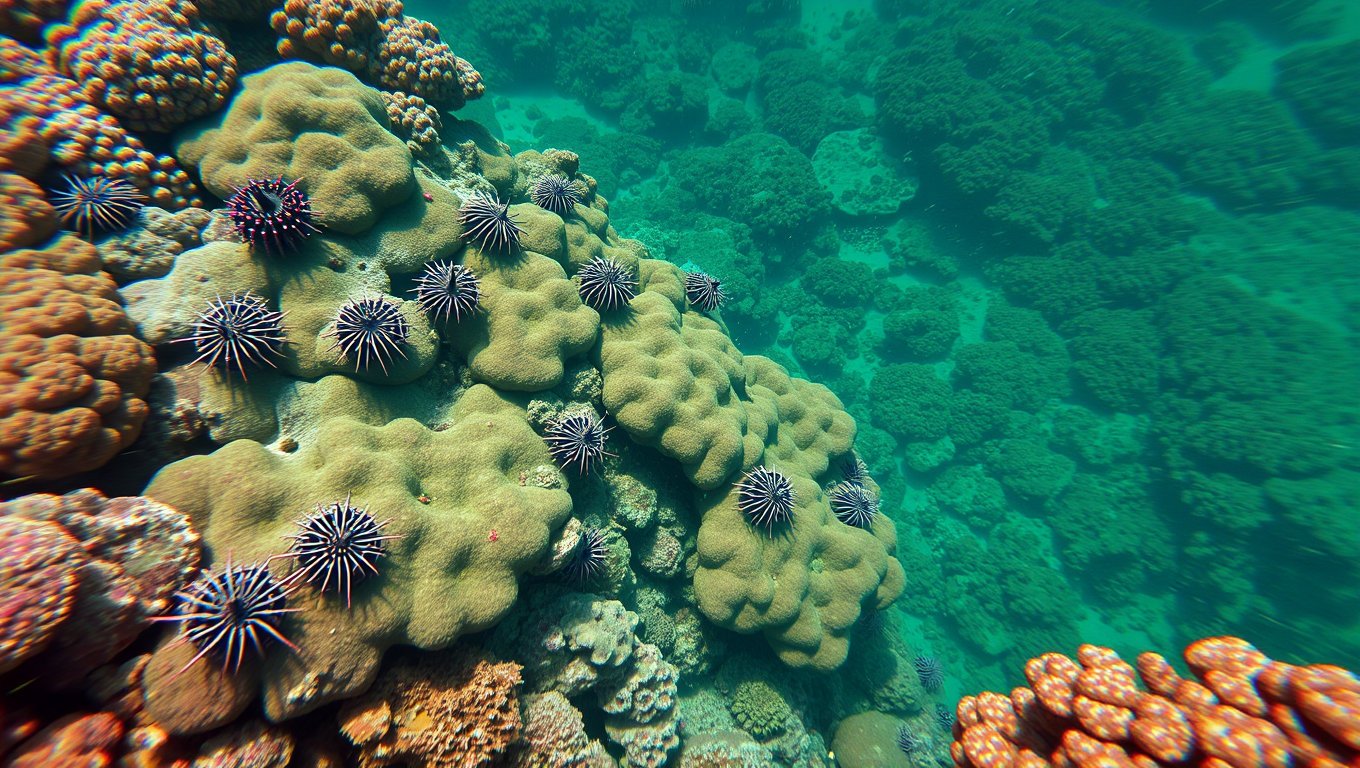While we try to keep things accurate, this content is part of an ongoing experiment and may not always be reliable.
Please double-check important details — we’re not responsible for how the information is used.
Coral Reefs
The Double Threats to Coral Restoration: Disease and Poor Water Quality
Coral diseases, particularly in the Caribbean, have caused major declines in coral populations, especially affecting staghorn (Acropora cervicornis) and Elkhorn (A. palmata) corals, which play a crucial role in reef ecosystems. Despite efforts to identify the pathogens that cause diseases like White Band Disease (WBD), and Stony Coral Tissue Loss Disease (SCTLD), the specific agents remain largely unknown. Coral restoration programs aim to restore these once abundant coral species, but the effectiveness is threatened by multiple stressors, including increases in disease frequency and nutrient pollution caused from runoff from land-based activities.

Climate
The Ocean’s Fragile Fortresses: Uncovering the Impact of Climate Change on Bryozoans
Mediterranean bryozoans, including the “false coral,” are showing alarming changes in structure and microbiomes under acidification and warming. Field studies at volcanic CO₂ vents reveal that these stressors combined sharply reduce survival, posing risks to marine ecosystems.
Ancient Civilizations
The Great Barrier Reef’s Resilience: Lessons from a Geological Time Capsule
New research adds to our understanding of how rapidly rising sea levels due to climate change foreshadow the end of the Great Barrier Reef as we know it. The findings suggest the reef can withstand rising sea levels in isolation but is vulnerable to associated environmental stressors arising from global climate change.
Coral Reefs
Hawaii’s Coral Reefs on Brink of Collapse Due to Overwhelming Sea-Urchin Populations
This study measured the growth rate of coral reefs in Honaunau Bay, Hawaii, using on-site data gathering and aerial imagery. Researchers found that the reefs are being eroded by sea urchin populations which have exploded due to overfishing in the area. The reefs are also threatened by climate change and water pollution, and their growth rates are not fast enough to counteract the erosion caused by the urchins.
-

 Detectors6 months ago
Detectors6 months agoA New Horizon for Vision: How Gold Nanoparticles May Restore People’s Sight
-

 Earth & Climate7 months ago
Earth & Climate7 months agoRetiring Abroad Can Be Lonely Business
-

 Cancer7 months ago
Cancer7 months agoRevolutionizing Quantum Communication: Direct Connections Between Multiple Processors
-

 Diseases and Conditions7 months ago
Diseases and Conditions7 months agoReducing Falls Among Elderly Women with Polypharmacy through Exercise Intervention
-

 Chemistry7 months ago
Chemistry7 months ago“Unveiling Hidden Patterns: A New Twist on Interference Phenomena”
-

 Albert Einstein7 months ago
Albert Einstein7 months agoHarnessing Water Waves: A Breakthrough in Controlling Floating Objects
-

 Earth & Climate7 months ago
Earth & Climate7 months agoHousehold Electricity Three Times More Expensive Than Upcoming ‘Eco-Friendly’ Aviation E-Fuels, Study Reveals
-

 Agriculture and Food7 months ago
Agriculture and Food7 months ago“A Sustainable Solution: Researchers Create Hybrid Cheese with 25% Pea Protein”





























